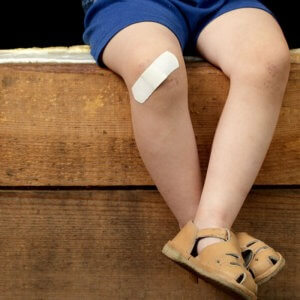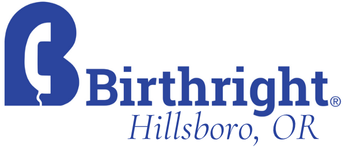 In every first aid situation, there is a general list of things you should know and be prepared for in case of an emergency. First aid can be helpful in anything from bumps, scratches, bites, stings all the way to serious burns, broken bones, and head or spine injuries. Read our list below to see our recommendations for these situations and how to best handle them.
In every first aid situation, there is a general list of things you should know and be prepared for in case of an emergency. First aid can be helpful in anything from bumps, scratches, bites, stings all the way to serious burns, broken bones, and head or spine injuries. Read our list below to see our recommendations for these situations and how to best handle them.
According to the American Red Cross, when a child or baby is experiencing a medical crisis, it’s important to provide care and seek help as quickly as possible. A child’s body is still forming so it’s more delicate and compact than an adults body. So you must treat it differently with first aid. Here are some guidelines on how to treat a child with first aid and signs that indicate a more serious matter that needs immediate medical attention. In addition, we have included a list of items to keep on hand, so you can provide basic treatment when needed.
The top 5 first aid actions you can take to provide the best possible care for your child or children:
Find a way to get help. If the situation seems urgent and beyond normal scrapes and bruises, call 911 or have a bystander/family member call for you.
- Make sure the area in which you are providing medical treatment is safe for you and the child. Clear the area to make sure it is ready for paramedics and tell someone to call 911.
- When possible, and especially if it’s not your child, wear personal protective equipment (such as gloves) to protect the child and you from communicable diseases or infections.
- Do not move a child who may have a neck or back injury from a fall or car accident. If the child says his neck or back hurts assume he should not be moved unless he is in danger.
- Keep track of child’s health records which you can obtain from your provider. If you have a computer and internet connection, ask your provider if they have a health records portal. Some organizations allow you to login to view records, which is a great way to find information when you quickly need it. If you don’t have a computer, you can keep health records in a file, and organize them by date, oldest in the back, newest in the front. In the event of an emergency, or a doctor wants to know what medications your child may be allergic to, this information is at your fingertips and easy to access. If you want to keep your own health record, write down the date of your child’s medical visit, the reason for the visit or hospitalization, any medications and/or reactions, and the outcome. You can also ask your doctor for copies of your child’s records before you leave a visit!
Small bumps, scratches, bites and stings
Stinging Insects (bees, wasps, spiders)
- Use a scraping motion with a credit card or similar flat edged item, or tweezers, to remove a stinger. Place a cold compress on the sore area to alleviate pain and swelling.
- If the child starts to have trouble breathing or you notice fainting, swelling of lips, face, throat or hives over the entire body occurs, call 911 or your local emergency number right away, send an appointed person to direct 911 to the site of concern.
- For spider and insect bites, call the pediatrician or Poison Help (1-800-222-1222). Have the pediatrician check any bites that become red, warm, swollen, or painful. Ask your child what the spider or insect looked like. If you have access to a computer or a mobile device with internet, you can search “spiders in [city, state]” to show your child photos. When in doubt, call your doctor’s office.
Animal or Human Bites
Wash the wound well with soap and water and call your pediatrician right away. Depending on the history of the animal or person that bit the child, he or she may need a tetanus, rabies shot or antibiotics. Topicals that can also help to address germs and infections that appear to be on the surface skin only include hydrogen peroxide, alcohol or alcohol swabs, anti-bacterial cream or ointment. Best to keep these items on hand!
Ticks
Use tweezers to grasp as close as possible to the head of the tick and twist the tick counter clockwise to avoid the head becoming stuck under the skin. Call the pediatrician if the child develops symptoms such as a rash or fever.
Snake Bites
Take the child to an emergency department if you are unsure of the type of snake or if you are concerned that the snake may be poisonous. Keep the child in a resting position and as calm as possible. Do not apply ice to the wound. Loosely splint the injured area and keep positioned at or slightly below the level of the heart. Identify the snake if you can do so safely. If you are not able to identify the snake but are able to kill it safely, take it with you to the emergency department for identification.
Skin Wounds
A good note to remember is to keep children up to date on all vaccinations specifically tetanus. Any open wound may need a tetanus booster even if the child is currently immunized. If wound is open and deep, ask the pediatrician if the child needs a tetanus booster.
- Bruises: Apply cool compresses to slow the blood flow to the area. Call the pediatrician if the child has a crush injury, large bruises, continued pain, or swelling. The pediatrician may recommend acetaminophen for pain.
- Cuts: Rinse small cuts with warm water until clean and then use direct pressure with a clean cloth to stop bleeding. Hold in place for 1 to 2 minutes or until bleeding stops. If the cut is not deep, apply an antibiotic ointment then cover the cut with a clean band-aid. For large or deep cuts, or if the wound is wide open call the pediatrician or emergency department immediately. For major bleeding, call for help (911 or your local emergency number). Continue direct pressure with a clean cloth until help arrives.
- Splinters: Remove small splinters with tweezers, then wash until clean. Taking the flat edge of the tweezers and pushing from the bottom of the splinter can help it to move towards the skin’s surface. If you cannot remove the splinter completely, call the pediatrician.
- Puncture Wounds: Do not remove large objects such as a knife or stick from a wound. Call for help (911 or your local emergency number). Such objects must be removed by a doctor. Call the pediatrician for all puncture wounds. The child may need a tetanus booster.
Fractures & Sprains
If an injured area is painful, swollen, or deformed, or if motion causes pain, wrap it in a towel or soft cloth and make a splint with two wooden spoons or other firm material to hold the limb in place. Do not try to straighten. Apply ice or a cool compress wrapped in thin cloth for 20 minutes or less. If there is a break in the skin near the fracture or if you can see the bone, cover the area with a clean bandage, make a splint as described above, and seek emergency care. If the foot or hand below the injured part is cold or discolored (blue or pale), seek emergency care right away.
Whenever you have doubt about any medical concern, call your child’s doctor, 911, the poison control center or a medical professional. You should also get guidance from your doctor about what unique medical concerns may need ongoing medical attention for your baby or child.
What should go into a first aid kit?
Now that we have addressed causes of concerns and administering medical attention, what we use to administer is equally important! A well-stocked first-aid kit kept within easy reach is a necessity. It’s best to keep a first-aid kit in your home and one in your car if you drive. Also, be sure to bring a first-aid kit on family vacations or family outings where you may be away from the city. You can make your own kit or purchase one pre-made at your local drug store. Here’s a solid list of items for a complete kit. Make sure you read the labels for use too!
Emergency contact list
First-aid manual
Sterile gauze pads of different sizes
Adhesive tape
Adhesive bandages in several sizes
Elastic bandage
Splint
Antiseptic wipes
Soap
Antibiotic ointment
Antiseptic solution (like hydrogen peroxide)
Hydrocortisone cream (1%)
Acetaminophen and ibuprofen
Extra prescription medications (if the family is going on vacation)
Tweezers
Sharp scissors
Safety pins
Disposable instant cold packs
Calamine lotion
Alcohol wipes or ethyl alcohol
Thermometer
Plastic non-latex gloves (at least 2 pairs and 2 masks)
Flashlight and extra batteries
Blanket
This list is a short compilation of the many things you may need to know when caring for a child. Please remember to always consult a doctor when handling injuries in children and if you are unsure call your child’s pediatrician right away.
Source: www.healthychildren.org/English/safety-prevention/at-home/Pages/First-Aid-Guide.aspx www.redcross.org/take-a-class/first-aid/performing-first-aid/child-baby-first-aid
